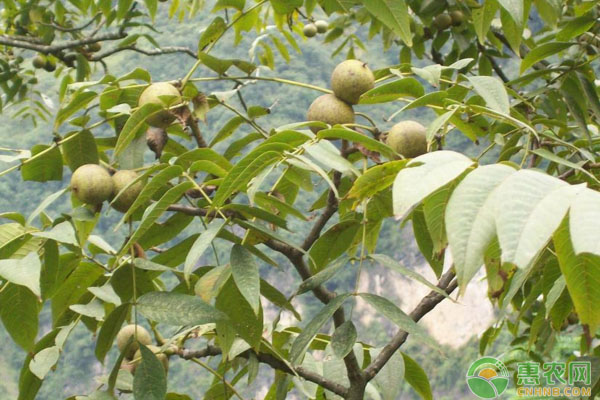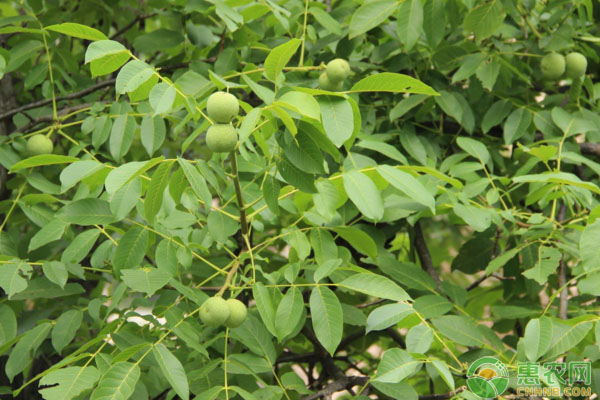Walnut not only helps the development of brain and visual function, but also has anti-aging and blood sugar lowering effects. Therefore, it is called “longevity fruitâ€. Today, walnut has become a favorite and welcome nutrient, and how to improve walnut Production is one of the main research projects of agricultural researchers. Today, Xiaobian will briefly talk about the high-yield cultivation and management points of walnuts in karst areas. 1 Building and planting 1.1 Selection of good varieties Choose high-quality walnut varieties with strong resistance, thin shell and high kernel yield, such as Cannon Walnut, Nujiang No. 1, Nujiang No. 2, Yunxin, etc. 1.2 Garden selection The selected soil layer should be deep and fertile, and the water retaining power is very strong on the sandy soil at the bottom of the sunny slope. The thickness of the soil layer is required to be above 80 cm. At the same time, sufficient light is required, and the annual average temperature is controlled at 9 to 16 °C, and the annual rainfall is above 800 mm. 1.3 Reasonable close planting When planting, use excellent grafted seedlings for reasonable close planting. Generally, the grafted seedlings can be fruited two or three years after planting, and they can enter the high yield period in four or five years, while the seedlings need 8 to 10 years to bear fruit, and 15 a to enter high yield. period. The conventional planting specification of walnut is 3 m×4 m, and the planting of 55 plants/667 m 2 is most suitable. The dense planting garden requires planting 80-90 plants/667 m 2 . Since the walnut belongs to the monoecious cross-species tree, it is required to pollinate between different plants, so that the walnut plantation planted in pieces can obtain high-yield walnuts. The planting time of walnut seedlings is from September to November, or before germination. Before planting, dig a large hole, laminate the organic fertilizer, phosphate fertilizer and soil into the pit. The seedlings with sufficient water absorption of the roots are trimmed with scissors and placed in the pit. When placed, the seedlings are kept vertical and the roots are stretched. It is to be flush with the ground, and then the root water is poured, and the weeds are covered with the weeds, which is beneficial to the survival of the walnut trees. 2 Fertilizer management 2.1 Farming It is necessary to carry out deep ploughing and greening on the walnut garden, or apply organic fertilizer to increase the yield of the walnut. The best season for deep ploughing in the walnut garden is spring, summer and autumn, and the depth is 60-80 cm. Be careful not to damage the coarse root with a diameter of 1 cm or more. Orchards need to clear weeds from April to September every year, generally weeding two or three times, and cultivating once in early autumn and winter. 2.2 Fertilization Nitrogen and potassium are the main elements required for walnuts, so it is necessary to add nitrogen fertilizer, which is beneficial to increase the yield of walnuts. The principle of adhering to thin application of saplings is generally divided into two types: base fertilizer and topdressing. Fertilization can be carried out by means of radial fertilization and ring fertilization. The base fertilizer is generally applied in the spring and autumn, after harvesting, before the leaves, through the fertilized organic fertilizer, such as manure, compost, etc., the topdressing is mainly based on quick-acting inorganic fertilizer, applied 3 times a year, the first time before flowering, the second time During the young fruit development period, the third time was applied during the hard core period of the nut. 2.3 Irrigation Walnuts have weak drought resistance, and irrigation of walnuts can increase the yield. Therefore, in the flowering period of walnuts, the period of rapid growth of fruits, the period of fertilization and the period of winter drought, water should be poured in due course. 3 plastic trim Walnuts are most suitable for pruning walnut trees in autumn. Usually, the saplings are pruned in September and should be trimmed into trunks. In the first ten days of October, the trees are trimmed. It is strictly forbidden to trim the walnut trees in winter so as not to cause the walnut trees to remain. hurt. 4 Pest control 4.1 Walnut powdery mildew Hazard: walnut powdery mildew can cause walnut tree to fall and weaken, which greatly affects the yield of walnut; prevention and control: clear diseased leaves and diseased branches, burn the residual branches in time; strengthen the management of walnuts and enhance the disease resistance of walnut trees In July, spray 50% methyl thiophanate 1000 times to prevent the disease. 4.2 Walnut Cloud Beetle Hazard: the trunk and branches of walnut trees; prevention: artificially catching insects, poisoning larvae with drugs. 5 Harvesting and storage 5.1 Harvesting and peeling The best period for harvesting walnut fruit: harvesting occurs when some of the walnut fruit is naturally cracked. Antioxidants Vitamins,Antioxidant Vitamins Tablets,Rubber Antioxygen,Antioxidants Free Radicals SHANDONG BAISHENG BIOTECHNOLOGY CO., LTD , https://www.baishengbioproducts.com


High-yield cultivation and management points of walnut in karst area